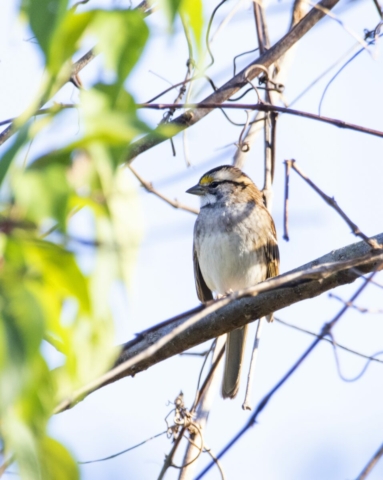All photographs were taken by Nathan Collie on location at Old Town.
Audio Recording
Conservation Status
While White-throated sparrows are very common and widespread, their populations are declining. Reasons for this decline can be attributed to many things such as habitat loss, predation from domestic cats, and collisions with buildings. These sparrows migrate at night and have difficulty seeing tall buildings and structures as they fly, making them vulnerable to fatal collisions.
Habitat
White-throated Sparrows spend their summers in the Northern United States and Canada. They can be found in coniferous or deciduous forests, especially in low areas with dense vegetation, as well as areas regrowing after logging, fires, or insect damage. Edges of ponds, meadows, and bogs are also ideal habitat for them. During winter and migration, these sparrows can also be found along edges of woodlots, hedgerows, thickets, weedy fields, suburbs, backyards, and city parks.

